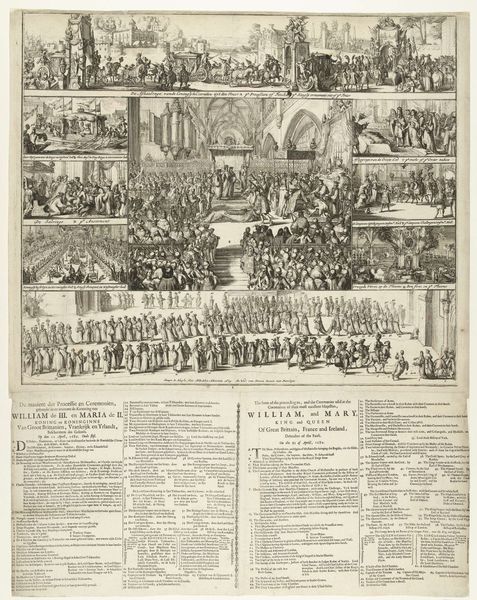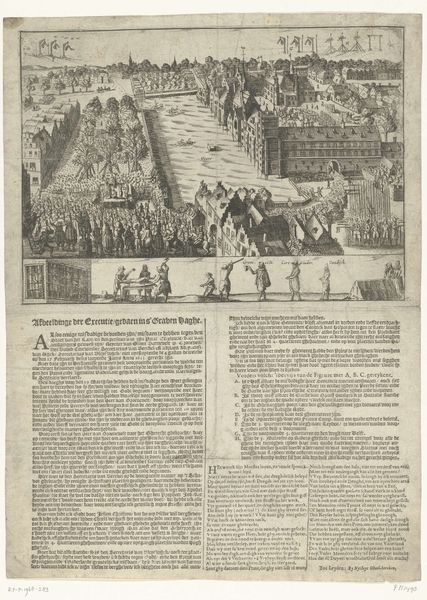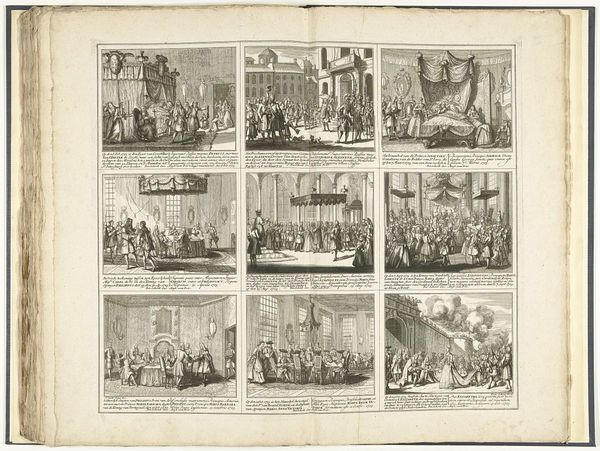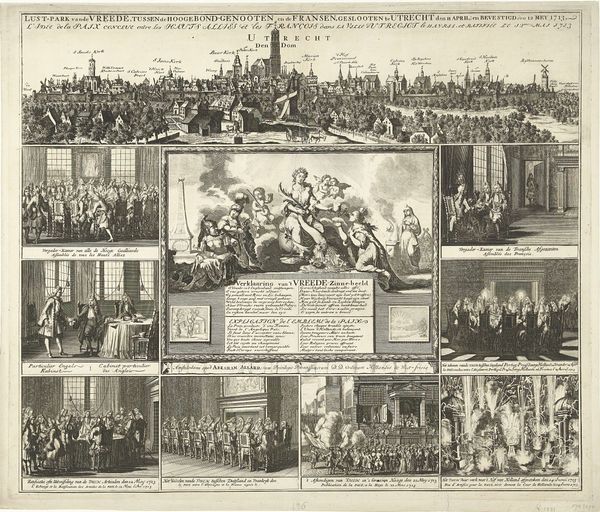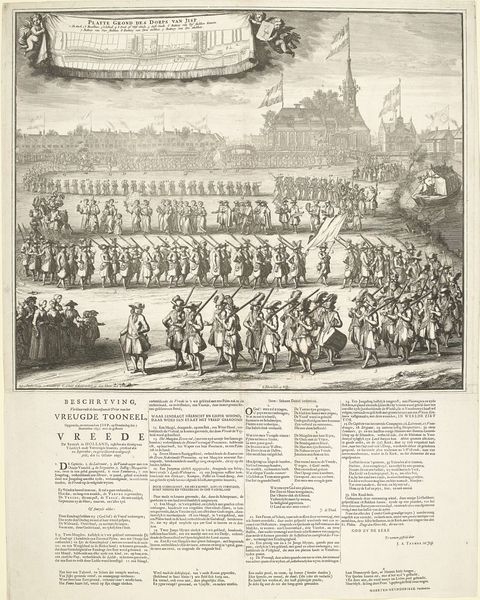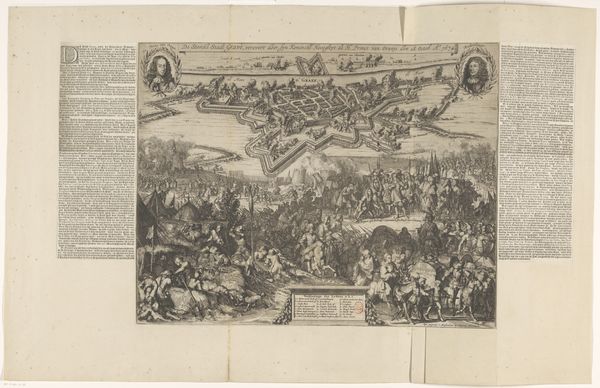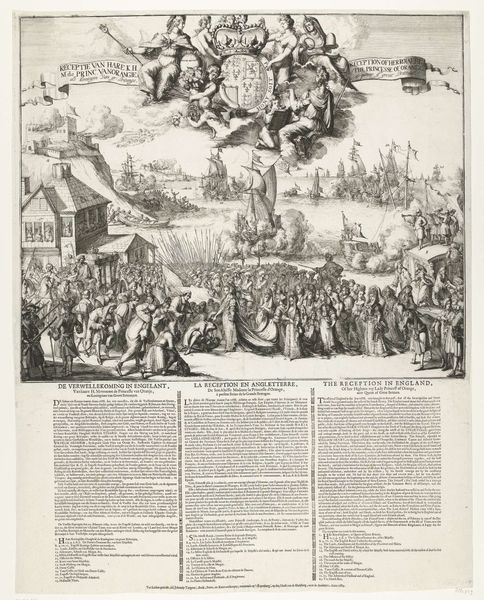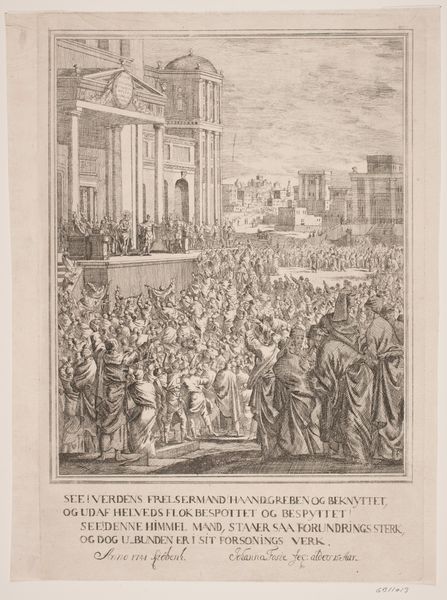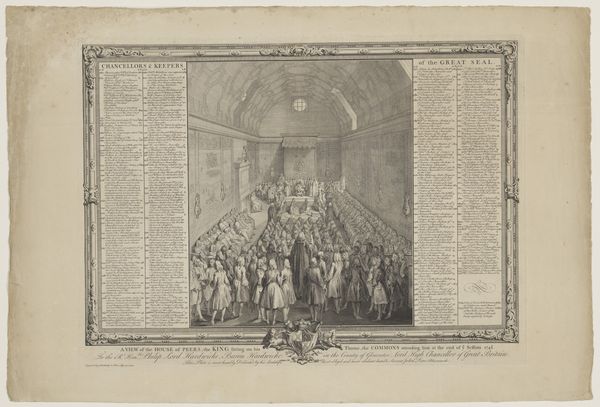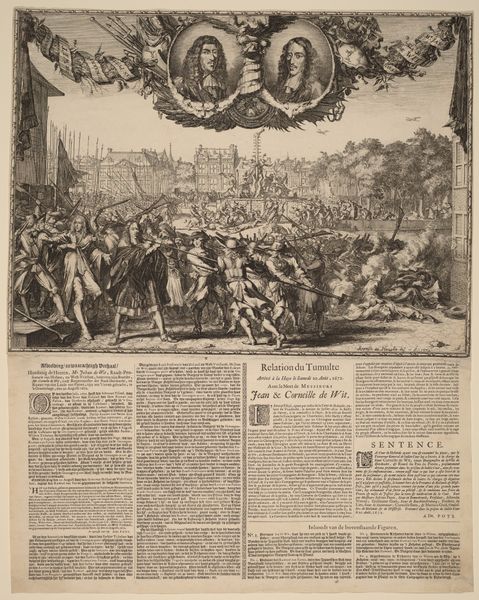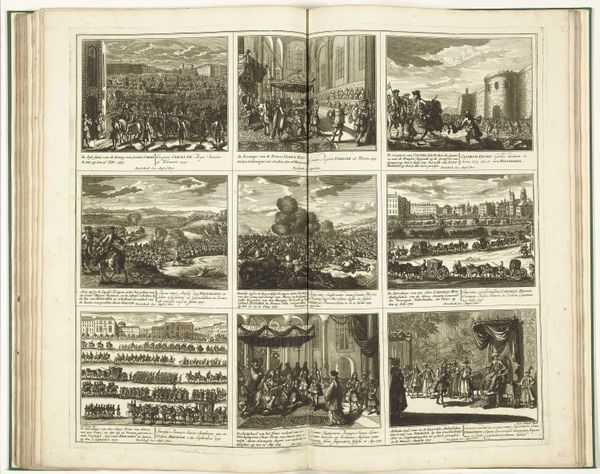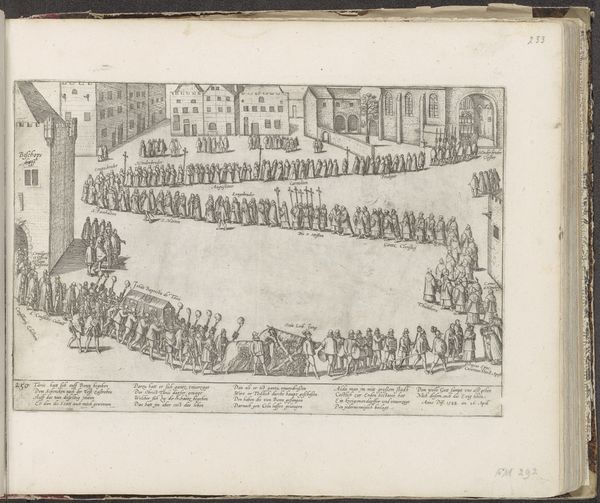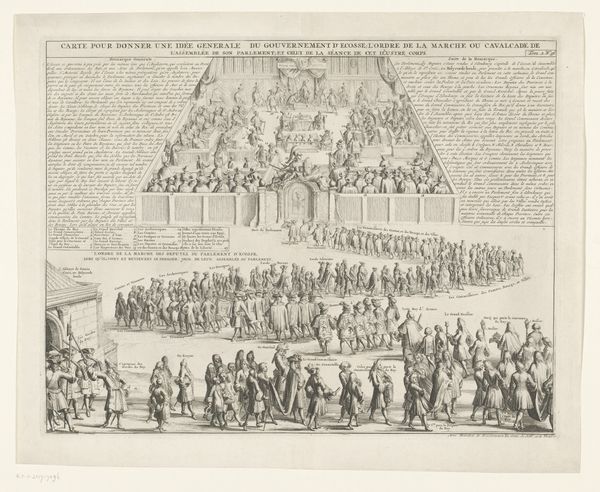
print, etching
#
narrative-art
#
baroque
# print
#
etching
#
cityscape
#
history-painting
#
academic-art
Dimensions: height 480 mm, width 580 mm, height 232 mm, width 565 mm
Copyright: Rijks Museum: Open Domain
Editor: Here we have Romeyn de Hooghe's etching, "Koning Willem III bij een zitting van het Lagerhuis, 1689," dating from 1689. The density of detail is immediately striking, especially considering it’s a print. I'm curious, what visual strategies stand out to you in how the artist communicates this scene? Curator: Consider the use of perspective. De Hooghe employs a rather flattened, almost stage-like space. The multitude of figures, rendered with near-equal clarity regardless of their depth within the image, contributes to a sense of overwhelming detail, as you noted. The linear precision afforded by the etching technique also serves to intensify this effect. Editor: It feels almost documentary in its approach. What purpose does that level of detail serve? Curator: It may serve to document the scene, but consider what the artist has included to further elevate this gathering beyond its representational properties. Consider the upper register, where the royal coats of arms preside over all the representatives in the chambers. Further, is the very composition and linear treatment a statement about the ordering principles, of rational control, being applied to this historical moment? What is your understanding of the texture created by the details of rendering fabric and the depth produced by these various artistic decisions? Editor: It emphasizes the rigid formality, this idealized, organized system of government... but is it also creating a sense of artificiality? Like a highly constructed, symbolic space, as you've suggested. Curator: Precisely. This leads us back to form as content. De Hooghe uses line, form, and perspective to make an argument about order, power, and representation, which creates multiple layers for decoding. Editor: I never would have seen that without you pointing out how those formal qualities contribute to its meaning. I focused so much on *what* was depicted. Curator: Often, *how* the subject matter is rendered provides richer insight. Looking closely, even at a historical document like this print, opens up layers of analysis.
Comments
No comments
Be the first to comment and join the conversation on the ultimate creative platform.
